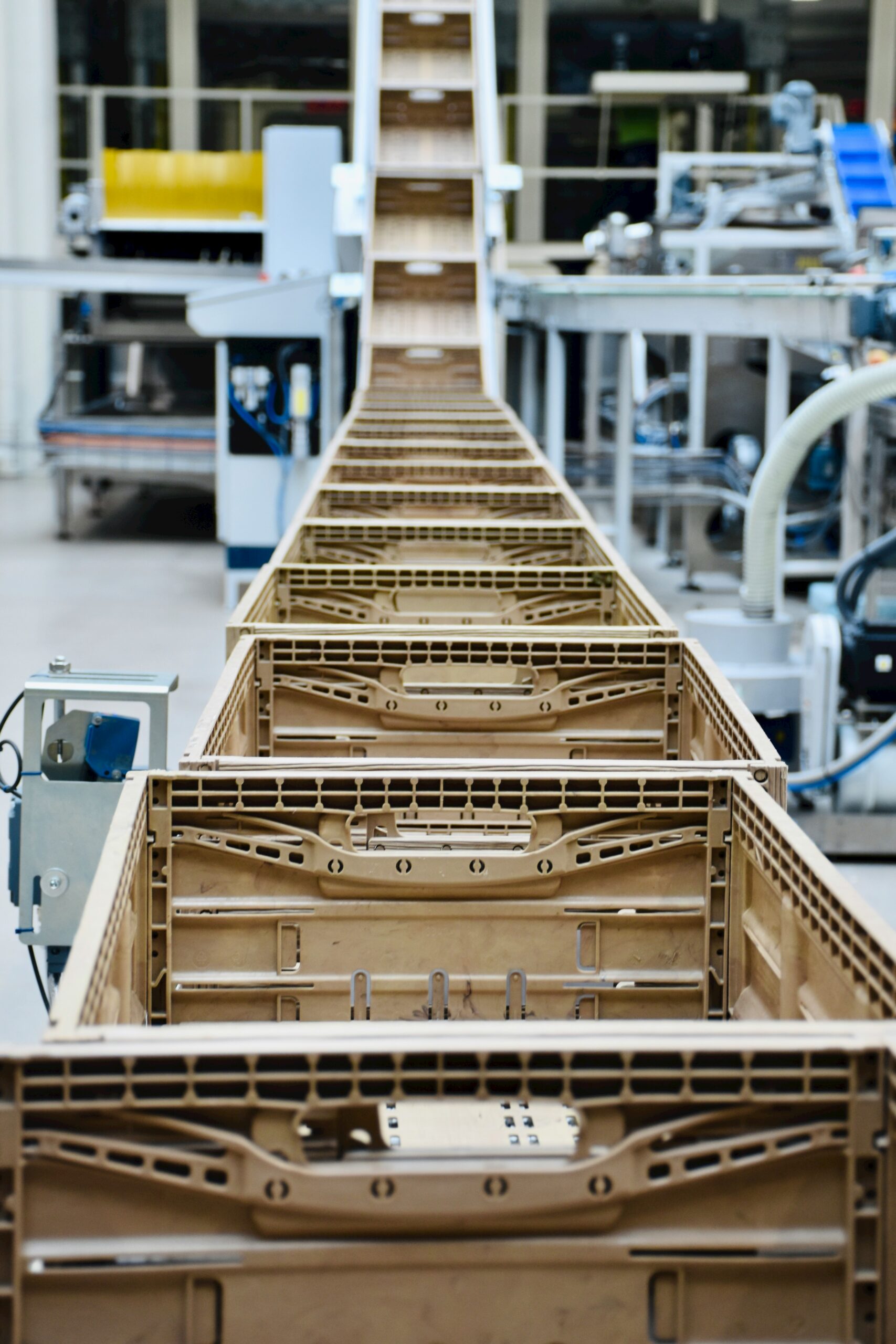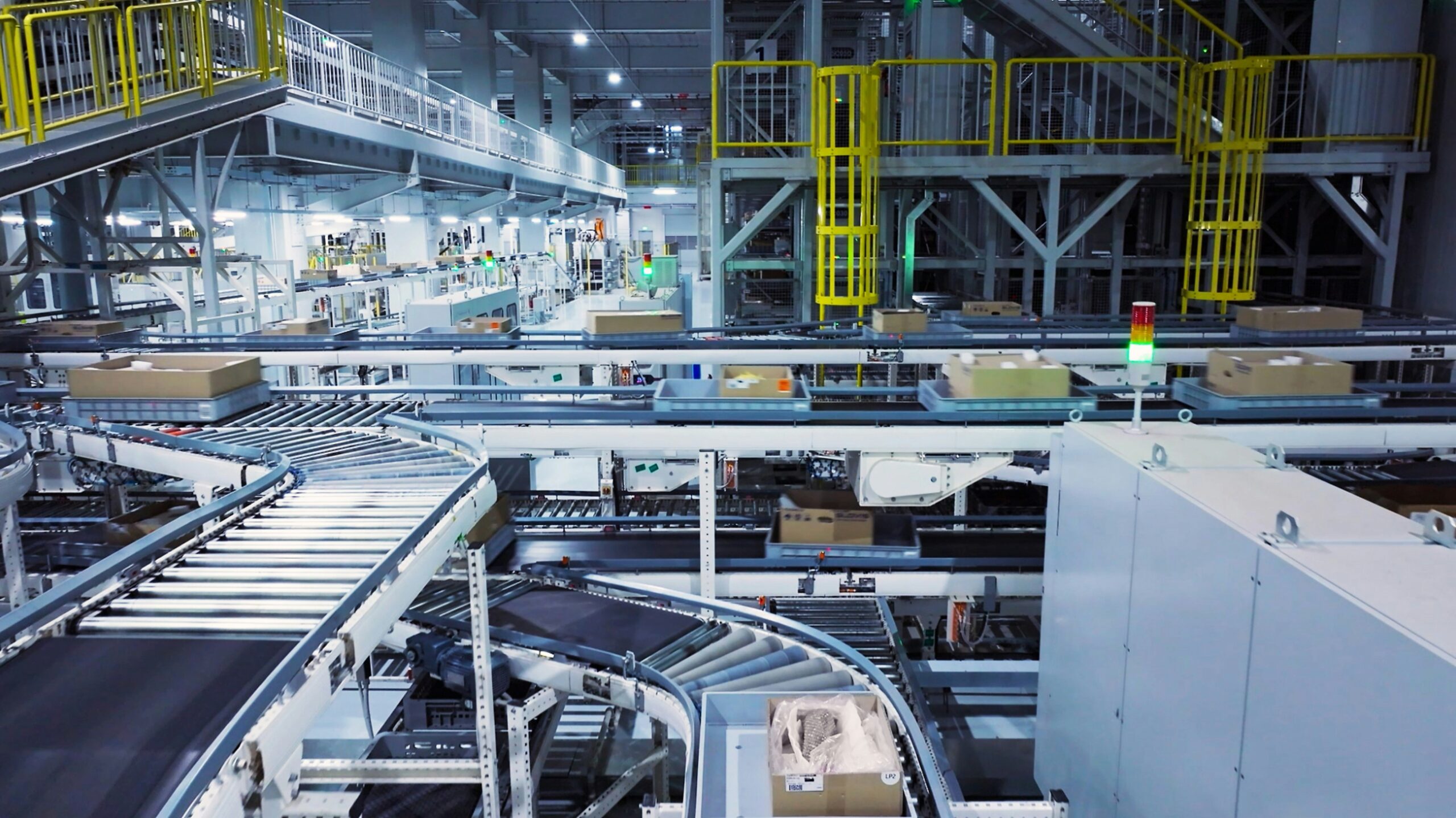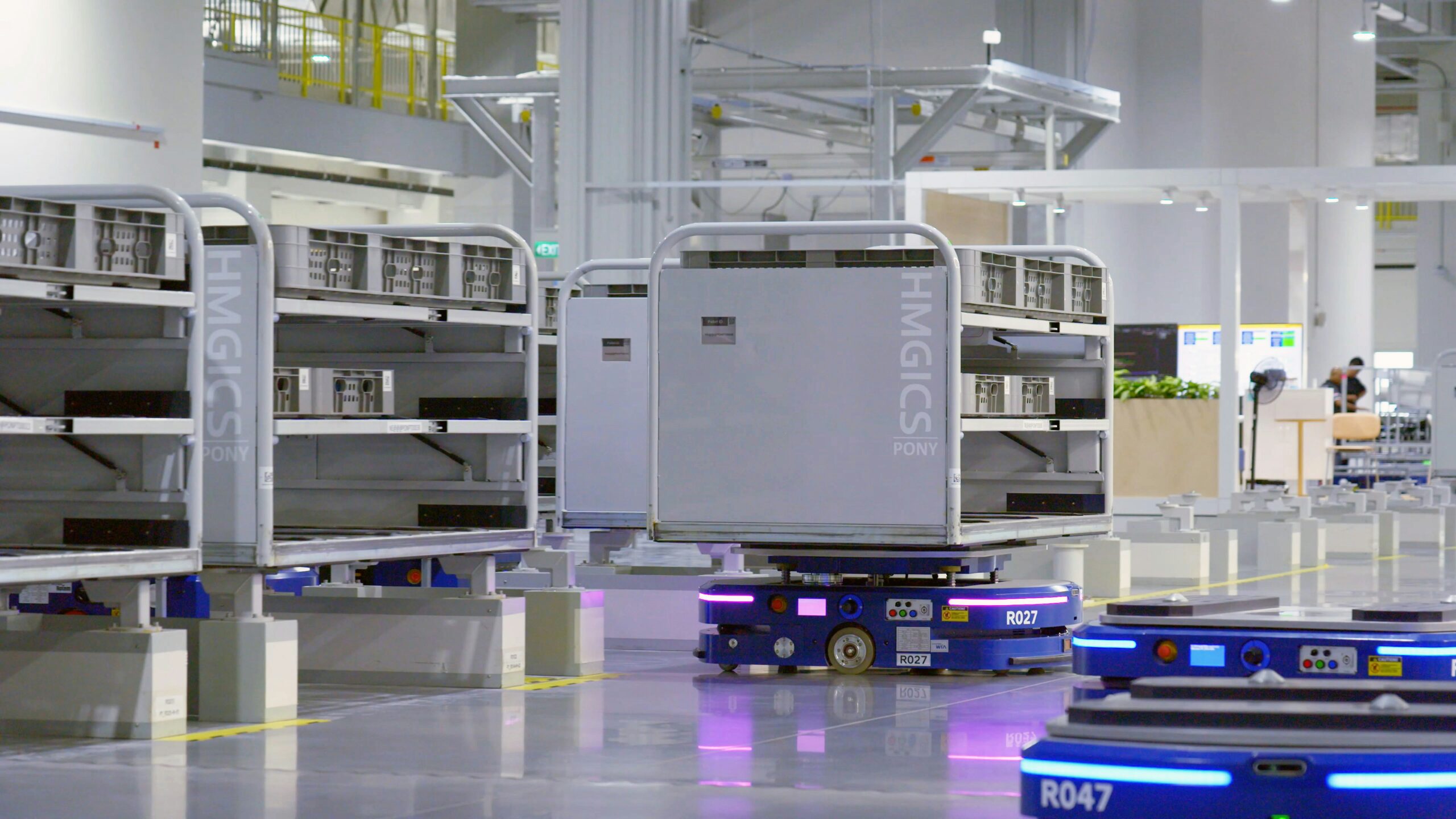Introduction
Automation and technological advancements are causing a substantial paradigm shift within the logistics sector. Particularly palletizing robots, the application of robotics in logistics is among the most significant developments. By enabling the delivery of merchandise with an unprecedented degree of precision and efficacy, these machines are fundamentally transforming the product handling, packaging, and transportation industries. The technological advancement is exemplified prominently by the QJRB800-1 palletizing robot. This revolutionary product in its field is characterized by its impressive 800kg payload and 3159mm reaching distance of this high-load palletizing machine.

An Examination of the Function of Robotics in Logistics
Assigning a variety of supply chain responsibilities through the use of automated systems and machines is known as robotics in logistics. These duties include the following: sorting, packing, transporting, and storing. The utilization of robotics in logistics has been expanding consistently due to the need for more streamlined, reliable, and cost-effective processes.
Logistics Automation’s Evolution throughout Time
The initial applications of robotics in logistics comprised simple robotic arms and automated conveyor belts. Proficient robots with the ability to execute intricate tasks have been created possible by decades of technological progress. Logistical robots of the twenty-first century are outfitted with sophisticated sensor technologies, artificial intelligence, and machine learning systems, which enable them to execute duties with extraordinary accuracy and flexibility.
Trends and Developments
Current developments in robotics in logistics include the implementation of autonomous mobile robots (AMRs) for internal warehouse transportation, the introduction of sophisticated palletizing robots, and the creation of collaborative robots (cobots). The main goals of these advancements are to maximize productivity, reduce the vulnerability of employees to errors, and decrease costs associated with operations.
Logistics Advantages of Integrating Robotics
Numerous advantages come from incorporating robotics in logistics:
Accelerated Processing Times: The ability of robots to operate non-stop results in increased productivity.
Robots are capable of executing tasks with enhanced precision due to the integration of sophisticated sensors and AI.
Automation minimizes errors that may result in expensive rework, thereby reducing labor expenses.
Risk of injury to human workers is diminished when hazardous tasks are delegated to robots.

Robots that Palletize: Aspects of Supply Chain Transformation
Specialized machinery known as palletizing robots are engineered to systematically load products onto pallets. In industries that require efficient packaging and shipping of substantial quantities of goods, they constitute an indispensable element of the logistics chain.
Efficient and Precise Palletizing Robotic Systems
The automation of the stacking process, which has historically required a great deal of labor and time, results in increased efficiency from palletizing robots. Boxes, bags, crates, and drums are among the many products that these robots are capable of meticulously stacking. By simplifying the process and ensuring that the stacking pattern is consistent, this automation reduces the likelihood that products will be damaged during transport.
A Distinction Between Robotic and Manual Palletizing
Physical labor-intensive and error-prone, manual palletizing entails the stacking of products onto pallets by human workers. Mechanical palletizing, on the other hand, provides numerous benefits:
Work consistency and velocity are both superior to those of humans or robots.
Precise stacking is ensured by the robots’ adherence to programmed instructions.
Scalability: In lieu of increased labor, robots are capable of managing fluctuating workloads.
Prevents injuries that are commonly associated with repetitive motions and heavy lifting.

Illustration of Effective Implementations via Case Studies
In an effort to improve their logistics operations, a number of businesses have effectively integrated palletizing robots. As an illustration, upon integrating palletizing robots, a sizable distribution center documented a 30% hike in efficiency. Palletizing robots reduced product damage by 20%, resulting in significant cost savings, according to another case study from a manufacturing facility.
Presentation of the QJRB800-1 Palletizing robot
Designed specifically for high-load palletizing applications, the QJRB800-1 palletizing robot is a cutting-edge technology. Energy efficiency, rapidity, and stability are characteristics that have earned it a reputation. In this article, we examine the QJRB800-1’s distinctive characteristics and features in depth.
Qualities of a Technical Nature
Qualifying technical specifications are the QJRB800-1:
Axis Number: 4 | Model: QJRB800-1
Positioning Accuracy of ±0.5mm with a payload of 800kg
Ultimate Armspan: 3159 mm
Motion Range: ±185º for J1, ±95º and -48º for J2, ±112. and -17.5º for J3, and ±360º for J4.
Maximum speed: 65oC for J1, 65oC for J2, 65oC for J3, and 115oC for J4.
23 kilowatt-hours of power are available on the robot.
Weight of the cabinet: 140 kilograms; dimensions: 6507501150mm
Heavy-duty palletizing applications, including those found in brick factories, in the installing form on the ground.
Distinct Aspects
Among its many distinctive characteristics is the QJRB800-1:
Capable of managing substantial volumes while maintaining operational stability and speed.
Energy-efficient throughout all operational axes with a low power output.
Compatibility with specialized palletizing software and simple equipment composition for ease of integration and maintenance.
Scenes of Application
Heavy-duty palletizing applications are a perfect fit for the QJRB800-1. Wherever large, heavy products must be efficiently stacked and transported, such as in the brick manufacturing industry, it is especially effective. Wide-ranging industrial applications are facilitated by its extended arm reach and high payload capacity.

Supply Chain Benefits of Utilizing the QJRB800-1
Logistics operations can greatly benefit from the numerous advantages of the QJRB800-1.
Arm Reach Extension and High Payload Capacity
The QJRB800-1 conveniently manages sizable and weighty objects due to its 3159mm arm reach and 800kg payload capacity. Ensuring safe and efficient palletizing is of the utmost importance for industries that handle voluminous products.
Palletizing Operations with Increased Precision and Productivity
Reduced risk of product damage during transport is ensured by the QJRB800-1’s ±0.5mm repeat positioning accuracy, which enables precise stacking. In addition to expediting the palletizing process, its rapid operation improves operational efficiency as a whole.
Functionality with Palletizing Software Specialization
By integrating specialized palletizing software with the QJRB800-1, configurations for pallets can be optimized and stacking patterns can be modified. The robot’s versatility considerably amplifies its efficacy in various sectors and applications.
Low Operating Costs and Energy Efficiency
The QJRB800-1 is energy efficient due to its low power output, which lowers operational expenses. Moreover, the economical nature of the solution for extended periods of operation is enhanced by its sturdy construction and minimal upkeep needs, which effectively reduce expenses.
Practical Applications and Case Studies
A summary
We examine a number of case studies in which the QJRB800-1 has been successfully implemented in order to comprehend the practical implications of palletizing robots.
Initial Case Study: Brick Factory Implementation
The QJRB800-1 was incorporated into the palletizing procedure of a brick manufacturer. A substantial increase in output resulted from the robot’s accurate stacking and high payload capacity. Manual labor expenses decreased by 40%, and output increased by 25%, according to the company.
Large-Scale Distribution Center Adoption: Case Study 2
For the palletizing of heavy goods, a major distribution center implemented the QJRB800-1. An increase in efficiency of 30% resulted from the robot’s capacity to operate nonstop. Moreover, there were fewer errors and diminished product damage at the facility.
Application of Case Study 3: Heavy-Duty Tasks in a Variety of Industrial Settings
The QJRB800-1 has demonstrated its adaptability in hundreds of industrial environments. The implementation of robotic palletizing has improved operations across various sectors, including food and beverage, chemical manufacturing, and by ensuring perfect and consistent stacking. The efficiency and dependability of the robot are underscored by feedback received from industry experts.
Industry Professionals’ Testimonials and Feedback
Its dependability and performance are lauded by industry experts who have deployed the QJRB800-1. The QJRB800-1 has revolutionized our palletizing procedure by providing unparalleled speed and accuracy, as one logistics manager put it. Key advantages of the robot, according to another user, are its simple integration and low maintenance needs.
An Examination of Prospective Developments and Advances in Palletizing Robotics
Prospective developments are anticipated to further augment the capabilities of palletizing robotics in the foreseeable future.
In the Field of Robotics, Developments in AI and Machine Learning
In order to enhance their operational efficiency and adapt to diverse tasks, forthcoming palletizing robots will integrate more sophisticated machine learning and AI algorithms. Over time, the performance of these robots will improve as a result of the knowledge gained from their surroundings.
Constructing Palletizing Robots with Greater Versatility and Adaptability
In subsequent advancements, the objective will be to design palletizing robots that are more versatile and adaptable, capable of managing an extensive array of products and tasks. Complying to the varying requirements of industries, these robots will possess the capability to seamlessly transition between distinct palletizing configurations.
Automated Robotic System Integration of IoT and Intelligent Technologies
Intelligent and Internet of Things-enabled palletizing robots will possess increased intelligence and connectivity. The establishment of this connectivity will facilitate supply chain visibility, predictive upkeep, and enhanced collaboration.
Contingencies Ahead for Supply Chain Management and the Logistics Sector
Their influence on the logistics sector will increase as palletizing robots become more sophisticated. In order to optimize supply chain management, decrease operational expenses, and enhance overall efficiency, they will assume a pivotal role. These innovations will provide businesses with a competitive advantage in the marketplace.
In summary
Particularly with regard to palletizing robots, the importance of robotics in logistics cannot be overstated. Exemplarily efficient, accurate, and cost-effective, models such as the QJRB800-1 illustrate how sophisticated technology can transform logistics operations. Maintaining a competitive edge in the ever-changing industry will require the seamless integration of such groundbreaking solutions. By acquiring palletizing robots such as the QJRB800-1, logistics companies can improve their operations and ensure that their supply chain remains competitive in the long run.
